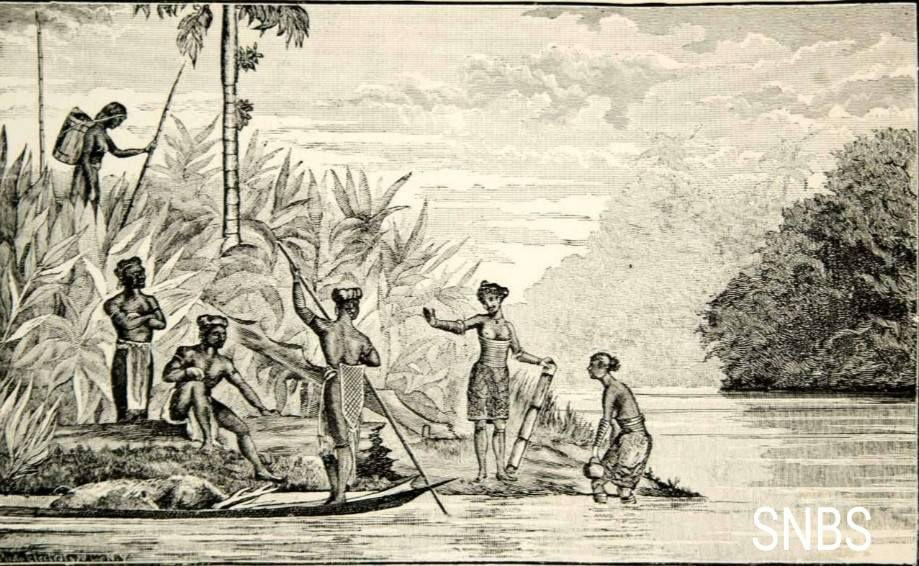EARLY HISTORY: ORAL RECORDS OF THE MIGRATION AND MINSANGOD WAR OF THE TAGAHAS OR TAGAAS TRIBE
- Marwan Bin Musa
- Feb 26
- 4 min read

This tribe was originally seeking a suitable settlement for their people. They also had a significant number of warriors known for their bravery, exceptional combat skills, and deep spiritual knowledge, including mystical and supernatural abilities such as invulnerability. They traveled towards the highlands through Togudon, using the Konipir River as their guide. Eventually, a group of the Tagahas Tribe arrived in the hilly area of Ulu Kiulu and established a settlement called Lokos. "Lokos" means an area near several tributaries.
The Tagahas people in Lokos were displeased when the Tangaa Tribe managed to settle in the fertile lowland plains of Penampang, while the Tagahas were forced to settle in the hilly terrain of Ulu Kiulu. Both tribes had hoped to establish their communities in a fertile and prosperous area. The Tagahas believed that during the great migration of various tribes, the Tangaa Tribe had deliberately altered road markers to divert the Tagahas away from the Penampang lowlands and towards Ulu Kiulu. This disagreement eventually led to the "Minsangod" war, a headhunting conflict between the Tagahas and Tangaa Tribes.
When "Kebelingan," the Tagahas war chief, established the Lokos settlement, the area was completely uninhabited. He decided to place the sacred jar of the Tagahas, known as "Tagaman," in the village. The sacred jar was guarded by his descendants, from his grandson Siran to Siran’s son, Gokis. "Tagaman" stood at a height of 60 cm with a circumference of 60 cm. It had a companion jar called "Gantung Sorili," but this sacred jar was too large and heavy to be transported to Lokos.
A leader of the Tagahas Tribe later named a nearby river "Gantung" as a symbolic reference to the "Gantung Sorili" jar. According to historical records, around the year 1886, another "Minsangod" war broke out between the Tagahas and Lotud Tribes, both of which had significant numbers of warriors.
At that time, the Tagahas population was estimated to be between 4,000 and 5,000 people, led by their war commander, Si Gantok, who refused to make peace with the Lotud Tribe. En. Little, the assistant resident, had to intervene and instructed the Tagahas people to conduct trade in Tamparuli, far from Lotud territory.
During the great migration of the Tagahas, a group of 200 warriors did not settle in Lokos but instead established a village in Sinulihan near the Mulau River, adjacent to Kampung Pahu.
Around the 1930s, a group from Bundu Tuhan, who claimed ancestral ties, traveled to Lokos to claim the "Tagaman" jar as their own. The village chief allowed them to take it. Four men managed to lift and carry the jar down from the house, but as they reached the ground, the jar suddenly became too heavy to move. The Lokos village chief then declared that if "Tagaman" did not wish to leave, only one person would be needed to carry it back. He then lifted the jar alone and returned it to the house.
At one point, "Tagaman" had to be placed outside under a shelter because several household members fell ill. However, despite being exposed to the rain, only about two inches of water ever accumulated inside the jar.
It is unclear why the Tagahas Tribe had conflicts and fought the Bundu Tribe from Kampung Tiung or why there were internal wars among the Tagahas in Kampung Pahu. After two generations of settlement in Ulu Tuaran, the Tagahas established their own kingdom called "Kalinsatan," which governed 14 Tagahas villages. These villages were Wasai, Kemula, Pauh, Rata, Ratau, Nababar, Pian, Ponguhaman, Mula, Pinagon, Ranti, and Sukang.
From these settlements, the Tagahas migrated to Kampung Tiung along the Penampang-Tambunan road. They later moved to Boyan and then to Labak near Kinarut, where they established several villages such as Sundozon, Pangamaon, Kobulu, and Kapalid. From Labak, they continued towards Koiduan and Mandalipau, where they engaged in another "Minsangod" war against the Bangkaaon Tribe in Sugud.
During the battle, the Tagahas warriors planted sharp bamboo spikes in the Sugud River, injuring any Bangkaaon fighters who attempted to cross. From Boyan, the Tagahas established a settlement in Timpango, near Sugud, under the leadership of Akoi Dawaian.
Additionally, according to further information, Tagahas settlements also expanded into the upper Tuaran River region, including Ulu Kimoulau, such as Lumpoho, Nuluhon, and Simbulon. In the original text, only Kampung Tungou and Nababar were mentioned. The great migration may have taken place from Ulu Kimoulau to Ulu Tuaran via the Paka River, where Nababar is located upstream.The Tagahas also moved to Mansiang Menggatal under the leadership of a great and invulnerable warrior named Bungigi, who had fought in several "Minsangod" wars.
Around the year 1900, seven families from the Tagahas Nababar group near Wasai migrated to Tombongan via Mangkaladom. Residents from Kampung Tungou, Rata, Dobon, and Wasai in Ulu Tuaran later moved to Kokol Menggatal. Some Tagahas from Kiulu also migrated to Telupid and Sook.
In conclusion, this history briefly records the migration and wars of the Tagahas Tribe.
Permission Granted (Michael J Luan)The Tagahas Tribe is believed to have derived its name from the "Tagaas" tree (Duabanga moluccana), which grew near their first settlement after their great migration.
Sources: (Heynes 1900), (Anon 1886), (Phelan 2001), (Anon 1915), (PS Shim 2007)
Compiled and Edited by: Kumis KumisImages from: MTH Perelaer 1887 and PS Shim 2007







Comments